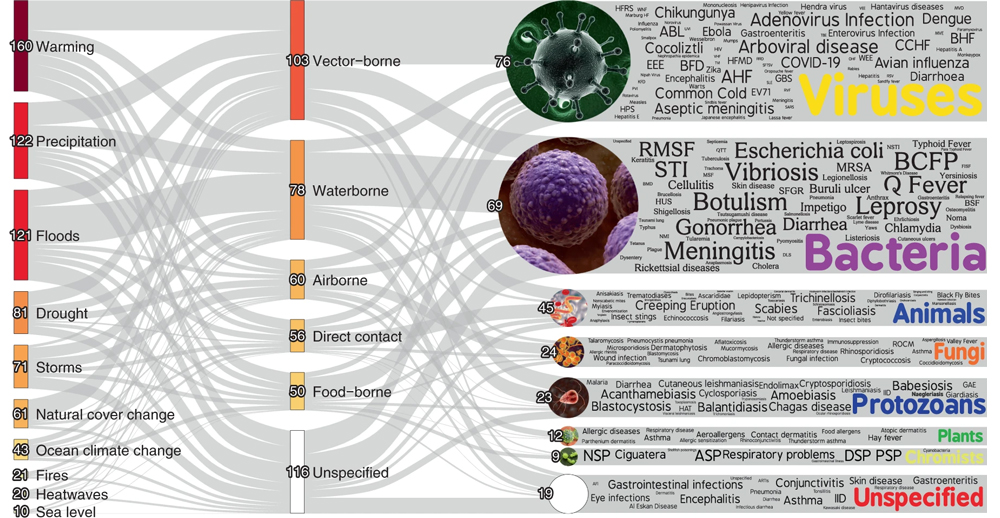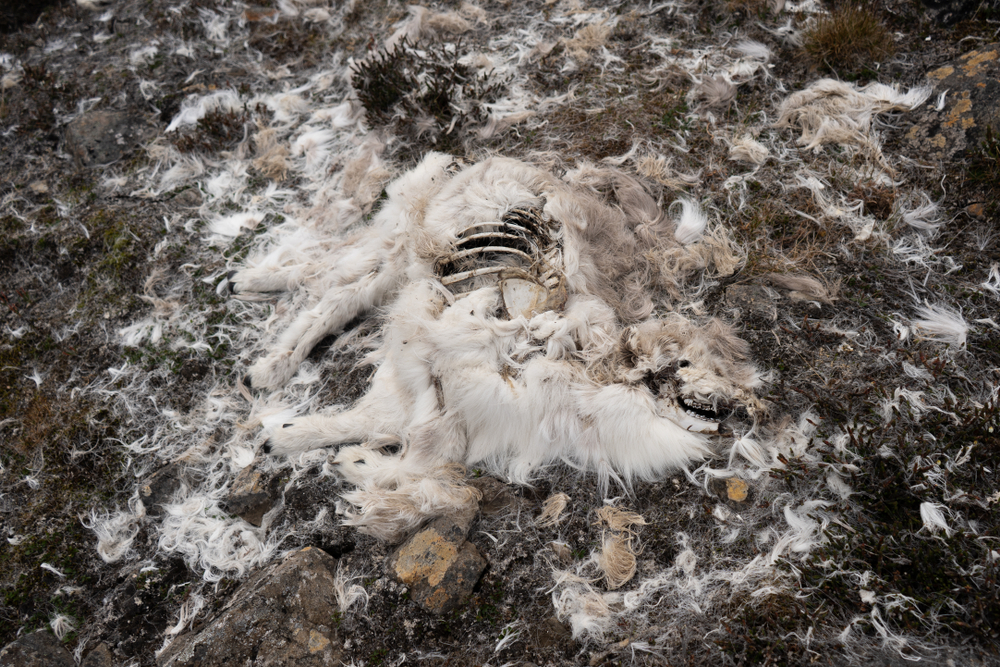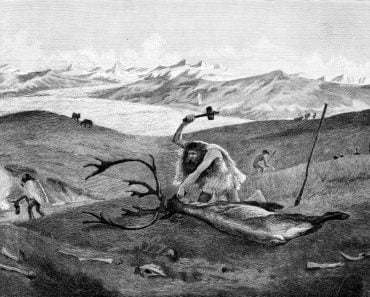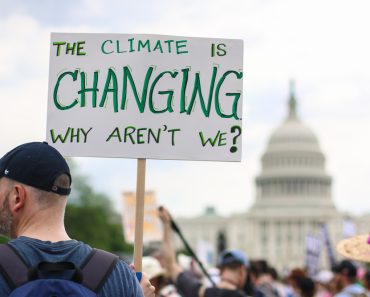Scientists found 3,213 empirical forms of evidence in which climatic hazards were linked to human pathogenic diseases. This included a total of 286 unique diseases. The total diseases aggravated by climatic hazards account for 58% of all infectious diseases reported to be affecting humanity worldwide.
We are all aware of the damning negative impact of the ever-changing climate on our planet’s future. Greenhouse gases that trap the heat re-radiated off the surface of the earth continue to be the root cause of global warming. Add to this our fast-paced lifestyle, and our addiction to fossil fuels, while mother nature is showing just how dire the consequences of our actions are: flash floods, extreme heat and cold, and melting ice caps. Now, one scientist and his team have added yet another consequence of climate change.
Climate change is making it easier for you to fall sick from infectious diseases.
Recommended Video for you:
Showing How Climate Change Is Making You Sick
In January 2020, Dr. Camilo Mora, a professor in the Department of Geography and Environment in the University of Hawaii at Manoa, and his team of graduate students, began a project to see how climate change can make us sick. The team was motivated by the unprecedented scale of the COVID-19 pandemic. In an interview with Medpage Today, Dr. Mora said, “At the beginning of the COVID pandemic, obviously there was a huge interest in whether this disease was being caused or was caused by climate change. So we decided to investigate this, and very early on we realized that we were not going to get enough access to the data that was required to answer that question.”
However, their research took them from one disease that had caused the pandemic to essentially every disease that has been historically known to mankind.
Past studies focused on “interactions” between human pathogens and specific climatic changes, but there was never a bird’s eye view of the comprehensive map. These researchers sought to create an overall picture. One person taking care not to catch the flu every winter is one thing, but what if your government knew all the diseases that the changing climate could bring to your area? Could we somehow prevent or diminish the effects of climate change on healthcare? That was their goal.

Camilo and his team performed complementary searches on 77,000 studies. They searched for known climatic hazards sensitive to greenhouse gases and how they “interacted” with diseases that affect humans (listed under two separate databases). For example, when they looked at flooding, they saw that multiple vector-borne diseases had increased. Among the disease carriers, mosquitoes were the most common, and infamously breed in stagnant water. They noticed that the cases of Chikungunya increased when a region experienced floods. This is something that Mora himself had experienced in rural Columbia when his living room flooded from the rains.
They then made a simple interactive web tool that allows you to see the climatic hazards, the diseases they impact, and the transmission pathways by which they interact. For transparency, they made this tool public; click here to explore their findings.
They found 3,213 empirical forms of evidence in which climatic hazards were linked to human pathogenic diseases. This included a total of 286 unique diseases. The total diseases aggravated by climatic hazards account for 58% of all infectious diseases reported to be affecting humanity worldwide.
The numbers alone paint a pretty bad picture, but the authors learnt even more by looking deeper into their data. Here’s what they found by reading between the lines.
Climate Change Is Bringing Human Pathogens To YOU
One of the most well-established indications of climate change is the shift in the geography of various species caused by habitat disruption. Wildfires, floods, drought and storms all upset the habitat of native wildlife species. Animals move out of their destroyed niches into larger areas looking for food and shelter. Sometimes, they end up in cities. That can be fine, except when the species that are becoming your new neighbors are vectors that can transmit disease; at that point, they become more than just bad neighbors!
Animals like bats, primates and rodents living in human-populated areas have led to outbreaks like Ebola and Nipah.

Besides bringing existing pathogens closer to us, global warming is also unearthing ancient dormant pathogens. We’re finding pathogens in the melting ice caps and thawing permafrost—pathogens that modern humans have never before faced. Researchers found that the anthrax strain released during an outbreak in Russia was actually from an ancient strain, most likely preserved in the frozen corpse of a dead animal and released from the melting ice.
Climatic Hazards Make The Pathogens Stronger
Have you ever heard an old person tell you how they used to just brush off the flu? Have they called you a snowflake for coming down hard with a common cold? Mora’s work shows that the only snowflakes involved were the bugs causing the flu back in those days. The research suggests that increasing heat waves may have given rise to ‘heat-resistant’ viruses. This allowed the viruses to battle the human body’s main defense against viral infections: fever. The virus thrives while we suffer.
Water-borne diseases are emerging in places that didn’t have any of those diseases in the past. Ocean warming and heavy precipitation reduce coastal water salinity. This provides fertile conditions for Vibrio vulnificus and Vibrio cholera, a leading explanation for Vibriosis or cholera outbreaks in areas where this disease used to be rare or nonexistent.
People Impaired By Climate Hazards
The broad effects of climatic hazards on land and marine food supply, and the reduced concentration of nutrients in crops grown under high CO2 conditions, can directly cause human malnutrition. This explains the increased risk of food-deprived populations to disease outbreaks, for example, Cryptosporidium, measles and cholera.
Moreover, “stress”, via changes in cortisol (stress hormone in the body) and a decrease of the inflammatory response, can reduce the body’s capacity to cope with diseases. Exposure to life-threatening conditions, such as floods and hurricanes, and depression from lost livelihood due to drought, are a few examples of how climatic hazards cause us stress. This is a likely mechanism by which climatic hazards reduce the body’s capacity to deal with pathogens.
Climatic hazards also affect the risk of disease by damaging critical infrastructure. For instance, floods, heavy rain and storms cause damage to sewage systems and disrupt potable water access. Lack of hygienic facilities and clean drinking water has been an indirect cause of many water-borne disease outbreaks. Even through the reduction in access to medical care, and basic survival supplies or reduced income, these hazards affect the general well-being of humans.
Taking This Forward
Dr. Camilo Mora wasn’t just ringing an alarm for humanity. His research gives us a historical perspective on the various diseases that have affected mankind and how they adapted to the changing climate. Governments can use this information to generate a public health policy that can either prevent or better prepare for future outbreaks. Even at a global level, countries can together act preemptively against pathogens known to be affecting them. Especially now that the science of climate change predictions is much more advanced, we can predict which pathogens stand to become stronger in the future. At that point, we can deal with them now, when they are comparatively weaker and easier to control.
References (click to expand)
- Mora, C., McKenzie, T., Gaw, I. M., Dean, J. M., von Hammerstein, H., Knudson, T. A., … Franklin, E. C. (2022, August 8). Over half of known human pathogenic diseases can be aggravated by climate change. Nature Climate Change. Springer Science and Business Media LLC.
- Timofeev, V., Bahtejeva, I., Mironova, R., Titareva, G., Lev, I., Christiany, D., ... & Vergnaud, G. (2019). Insights from Bacillus anthracis strains isolated from permafrost in the tundra zone of Russia. PloS one, 14(5), e0209140.
- (2022, August 15). Climate change exacerbates almost two-thirds of pathogenic diseases affecting humans. Nature Climate Change. Springer Science and Business Media LLC.












